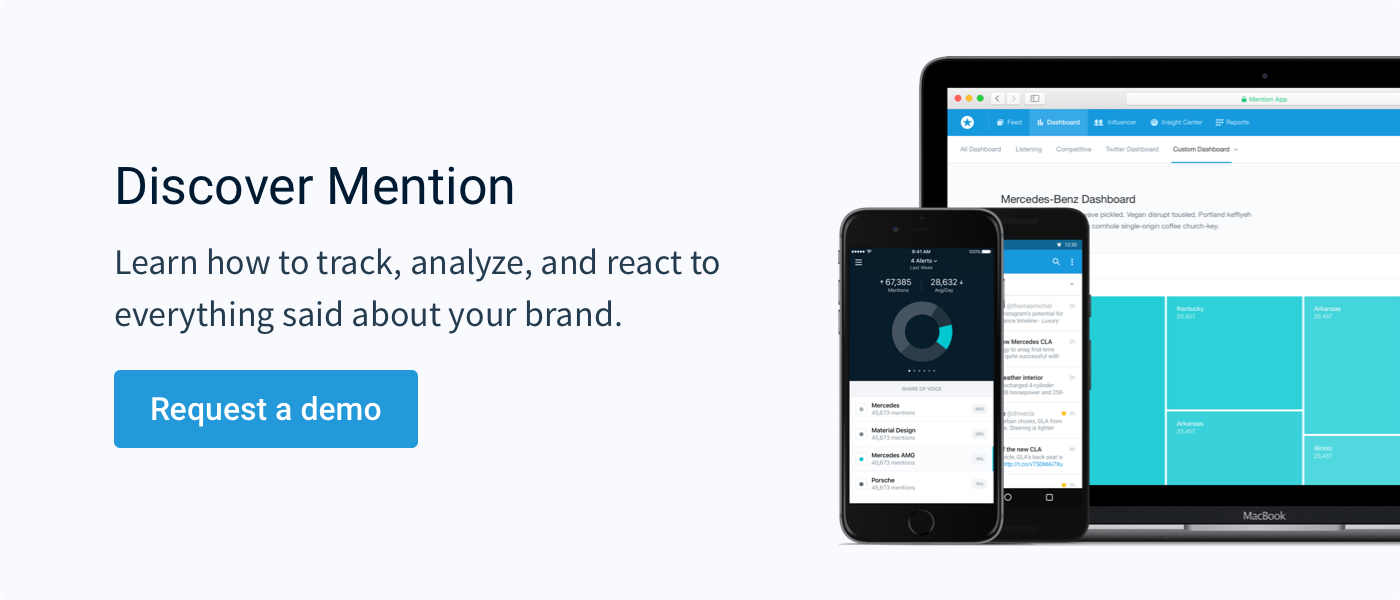“I love wasting time and money,” says no one ever.
Everybody wants to get the most of what they spend their money and time on. Fun fact: I never go to a restaurant without checking the reviews first, because I don’t like wasting time and money (and my cheat meal quotas.)

Same goes for PR teams in any company. With all the money and time spent on campaigns and influencer marketing, PR can be a lot of investment – but not a lot of guaranteed return.
How much money and time is your company spending on PR efforts every month? How much buzz or sales do you get out of it?
A lot of PR teams would say it’s difficult to measure (and thus, improve) PR ROI. But I must disagree.
As someone who won’t even spend $30 on a meal that’s not guaranteed to be good, I can’t understand how companies would continue to invest thousands of dollars into something they aren’t measuring and actively optimizing.
And the craziest of it all is that it can be done rather easily. With a good monitoring tool. Kind of like magic, but better, because it’s real.
Sooooo, in this post, we’ll go over all the ways monitoring can help you measure and boost your PR efforts, and get more PR bang for your buck.
3 Ways monitoring helps PR teams improve and measure PR ROI
Great PR teams get a lot of people to say nice things about their brands. Spectacular PR teams get a lot of people to say nice things about their brands, over and over again. And that’s usually the result of strategic relationship building, an efficient tracking process, and careful results optimizing.
And here’s how you can achieve all of that with the help of monitoring:
1. Focus on people who already know your brand and industry
If you’ve read any of our content on PR and influencer marketing, you’d know that we’re big fans of building relationships before you need them.
Remember that person who never socializes and only suddenly appears when she needs help with her essays? You don’t wanna be that person.
You need to build relationships, and the most efficient way is to start with people who already know you.
Having a good network of journalists and influencers are crucial for PR. And traditionally, it’s all about networking in events, and meeting people in person.
Nowadays, most of this networking happens on social media. PR teams spend more time in Facebook groups than hotel lounges.
And that’s great, because you can connect with basically anyone in the world over the internet.
What’s not so great about this, though, is it can get pretty overwhelming. Where in the world do you begin?
That’s where media monitoring comes in handy. By setting up alerts for your brand and your industry, you can:
- Easily find and reach out to people already talking about you. Naturally, they are much more likely to want to collaborate with you, since they already know you.
- Say thank you to your brand advocates so that they’ll be encouraged to talk about your brand and spread word-of-mouth.
- Discover influencers or websites talking about your competitors, who might be interested to cover other players in the field (i.e. you.)

And the key here is really to keep tabs and engage with these people before you need them. Remember, don’t be that person.
2. Efficiently track coverage and brand conversations (hint: not manually)
Once you’ve started putting your brand out there and building relationships, you’ll want to keep track of all the conversations and results.
And most PR teams do it manually. With a lot of Googling, a lot of Excel spreadsheets, and a loooot of screenshots.
And the worst part? Most of the time you don’t get the full picture. You miss mentions. You find out about an article someone wrote about you three months later. That’s neither efficient nor cost-effective. Your PR team have better talents than copy-and-pasting screenshots.
Tracking brand coverage manually also means that you’ll have to make deductions on questions like:
- Which opportunity turned into actual coverage?
- Which campaign generated the most buzz?
- Which influencers are your audience most excited about?
And any kind of guessing or speculation is bad news for your PR ROI. How do you know for sure that the 5K you spent on this campaign paid off? That the diva influencer was worth pampering?
With monitoring, you can take both the heavy lifting and the guesswork out of your tracking.
Since a monitoring tool basically helps you find all mentions of your brand anywhere, you’ll have a clear view of the who, what, where, how, of all your brand buzz.
More precisely, monitoring helps PR teams:
- Automatically collect all PR mentions in one place. Be it on Facebook, or Twitter, The New York Times, or Yelp, you’ll get it delivered all in one dashboard.
- Track mentions with no @mention or tags. Whether it’s a tweet that didn’t tag you, or a blog post that didn’t link back to you, you’ll receive an alert of any mention that contains your keywords.
- Monitor campaigns or hashtags. Collect all coverage on your latest launch in one place to easily evaluate your success.
- Measure the spread of a mention. See how much buzz each mention generates, from shares, to comments, to related articles.

3. Measure your PR campaigns with visual data (and with one click!)
To improve your PR ROI, you first need to be measuring it properly. But PR reports can be a nightmare – opening different social media dashboards, Googling press coverage, taking screenshots of everything – they take forever to create.
Well, that is unless you’re monitoring.
Since a monitoring tool already collects all your brand coverage and mentions, you can generate one-click reports to measure your key metrics.

You can build custom dashboards and visualize important statistics to determine whether your PR strategy is a success. And export those reports to share at a company meeting.
If you’ve set up alerts for your competitors – which you totally should – you can also easily benchmark against them, comparing your share of voice by platforms, top influencers,brand sentiment, etc.
To evaluate your PR efforts more specifically, you can look at things like:
- Overall brand sentiment – are customers generally talking positively about your brand? Look out for sudden dips and peaks and figure out why.
- Sentiment of a specific time period – how are customers reacting to your new product launch or the latest PR shift? Learn from the experience to prepare for the next event.
- Geographic and platform distribution – where (both virtually and physically) are people talking about you? Are you investing enough in brand advocacy there?
- Top influencers – who are the big guns that are booing or raving about your brand? Identify and engage with them and propose partnerships if appropriate.
With a monitoring tool like Mention, you can access these data in a few clicks, and export them easily to send to your team, clients, or any stakeholders.
Try it for yourself
If you’ve read this far, chances are you’re tempted to shake things up for your PR team. Good for you! Monitoring is easy to do and incredibly important for ambitious PR team to measure and improve their ROI. It also makes your life as a PR exec sooooo much easier.
Making the decision to change is the hardest part. Request a personalized consulting session and let us figure out the rest:
Subscribe to Marketing + Monitoring Weekly
Get hot blog posts, insanely useful resources, and funny gifs every Friday.

